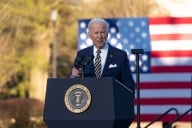You have /5 articles left.
Sign up for a free account or log in.
In good times and bad, colleges cite economic trends to justify their decisions. But do colleges operate with an understanding of economics?
Sandy Baum, a nonresident senior fellow at the Center on Education Data and Policy at the Urban Institute and professor emerita of economics at Skidmore College, and Michael McPherson, president emeritus of the Spencer Foundation and Macalester College, want to help. They have written a new book, Campus Economics: How Economic Thinking Can Help Improve College and University Decisions (Princeton University Press), to do so.
They responded via email to questions about their book.
Q: What is the goal of your book?
A: The goal of Campus Economics is not to lead readers to specific solutions for the challenges they face on their campuses. Rather, it is to help everyone involved in decisions on campus to approach issues analytically, considering the trade-offs involved and thinking about incremental changes rather than just comparing the value of one campus undertaking to another. We hope to make it easier for people with different responsibilities on campus and different preferences and priorities to be open to each other’s vocabularies and to engage in constructive conversations leading to better decisions more acceptable to the full community.
Q: You have a chapter entitled “Is a College a Business?” You write in that chapter that in at least some respects, students are customers. Many faculty members and some administrators will likely answer “no” to the first question and disagree with your second point. How would you answer the question, and why is it important to talk about such views with people who may disagree?
A: Liberal arts educators may be deeply committed to the idea that this is the form of education that can best prepare people for a changing society and economy. But students must be open to this idea before they come to college to be convinced to enroll in these programs instead of more vocationally oriented training programs. In other words, consumer preferences—and the shaping of consumer preferences—must play a role in the planning process for educational institutions. Colleges must attract students to be able to expose them to the educational opportunities they offer. Ignoring student preferences and willingness to pay is not a viable option.
But our main message here is that colleges are very different from most for-profit businesses. The primary goal is fulfilling the institutional mission, which may include research and public service in addition to education. Unlike the customers of most businesses, students are important participants in the production of the education colleges provide. But the unique characteristics of colleges and universities don’t negate the reality of their dependence on revenues and the importance of using available resources as efficiently as possible to achieve their goals.
Those most responsible for the business side of the enterprise must keep the college’s mission front and center, being willing to make choices few for-profit entities would make. And faculty members must recognize that they can only educate students who choose to enroll and that available resources are finite, necessitating difficult choices. Constructive debate about unavoidable trade-offs requires that different constituencies respect the language and perspectives of others.
Q: You write, “It may be entirely reasonable that a college maintain its archaeology department even if it has few majors.” Many colleges have made the number of majors key to decisions about eliminating departments. When is that a reasonable decision?
A: We use this example to illustrate the complexity of decisions for academic institutions. Even if no students major in a certain field, courses in that subject may be very important to many students and to the broad skills and perspectives nurtured by a liberal arts education. (Mathematics departments often have a great many enrollments but very few majors.) Some departments may cost money and require a transfer of resources from other endeavors. Certainly, the archaeology department in our example must be serving someone other than the faculty members themselves, but the number of majors does not provide a simple valid metric. For example, in some cases, a department may be producing research of value far beyond the walls of the university.
Finding out that the revenues of the college would increase if all required courses were eliminated would not by itself imply that there should be radical curriculum reform. But it would mean that the cost of the requirements should be acknowledged and the source of funds to cover those costs should be identified.
It is quite reasonable for some parts of the college to subsidize others. Even if it were possible to precisely measure costs and revenues of each component of the institution, eliminating those that do not bring in the revenue necessary to pay for themselves would not be consistent with the educational mission. With this example, it is easy to see that good solutions will require faculty members to understand the financial realities and business officers to value the education central to the institution’s mission so they can communicate well and reach balanced decisions.
Q: What do you think about tenure? Will it be viable when so many (tenured) positions have been eliminated?
A: The share of faculty who are tenured or on the tenure track has been declining for years, and it’s not clear what share of faculty must be in this system for it to continue to play its critical role. But tenured and tenure-track faculty are central to operating most institutions and are more likely than those with less job security to be dedicated to the success of the institution. The existence of tenure also helps build confidence in the integrity of the institution and its commitment to academic freedom.
As we point out in our book, tenure is a form of compensation. One consequence of reducing the job security of the faculty by eliminating tenure would be a need to pay more to recruit and keep excellent faculty. Calls for eliminating tenure to reduce budget pressures may not be well thought out.
As is the case for other controversial issues on campus, there are costs and benefits to most choices. Even strong advocates should recognize the costs and opponents should acknowledge the benefits. Open discussion of the extent to which having a large share of the faculty tenured reduces flexibility, of the importance of a strong tenure system for attracting and retaining high-quality faculty, of the tensions between the tenured faculty and those outside the system, and of the contribution of the system to academic freedom on campus should allow those with different perspectives to learn from those with whom they disagree.
Q: How should a college cut its budget when it is facing a decline in revenues?
A: The first question is, of course, whether budget cuts are necessary. Maybe there are contingency funds that could fill the hole. Maybe it’s possible to temporarily increase the draw on the endowment. Maybe new sources of revenue are likely to emerge.
But budget cuts are sometimes called for. Institutional planning should include revenue declines that are foreseeable. Have economic circumstances made it likely that state appropriations would be cut? Has a combination of the pandemic and international tensions made a reduction in international student enrollment predictable? Or has there really been a surprise? The decision-making process is likely to be quite different when there is no choice other than a quick response.
Just as important: Does the revenue decline look to be long-lasting or is it more of a blip? For an unexpected short-term dip in revenues, one-time responses such as a temporary hiring freeze or postponement of raises may be broadly accepted. But if a long-term decline in revenues is anticipated, people at the college are going to need to work together in searching for opportunities to reverse that trend or, if that is not possible, to identify the best ways to make long-term cuts in costs in ways that will allow the college to continue to pursue its mission.
It is helpful to think about the difference between short-term and long-term revenue increases in parallel to declines. A one-time infusion of federal pandemic funds or revenue from a commercial success might provide an opportunity for an across-the-board salary bonus. But using it to raise everyone’s base salary is likely to lead to problems down the road. Similarly, a short-term dip in revenues does not call for a salary reduction that employees will feel for years into the future.
One major danger to avoid is having every group on campus focus on protecting its own piece of the pie, a reaction that can make constructive change difficult or impossible. The best way to avoid that bad outcome, in our view, is to promote openness about budget planning and communication across all groups on campus. This should happen on a regular basis, both in better and in more challenging times. It’s no good for the administration to keep faculty and staff in the dark until trouble arrives and only then say, “Well, folks, we’re all in this together.”
Q: Inflation has returned to college budgets (and the budgets of individuals who work at colleges). How do you suggest that colleges understand inflation?
A: During times of high inflation, everybody experiences worries and uncertainties, and it’s a circumstance ripe for mistrust. The best course to follow will depend on a particular college’s circumstances, but the more members of the college community can recognize the need for cooperation and acknowledge one another’s challenges, the better the chances for riding the storm out successfully. We would encourage administrators and members of the board to recognize the difficulties inflation generates for faculty and staff who were already struggling to make ends meet. We would encourage employees to recognize that inflation may also affect the college’s ability to generate tuition revenues. In other words, everyone has to remember what the goals of the institution are, how central the people employed on campus are to success, and the reality that everyone may have to make compromises.
The recent surge in inflation is a reminder that colleges cannot exempt themselves from major societywide developments, like the pandemic or the effects of climate change.
A particular challenge in higher education is that major cost and revenue decisions are made in advance, with budgets set for at least a year. It’s not like airlines where fuel and ticket prices change overnight or sooner. Colleges and universities can’t be sure that the budgeted wage increase will prove to be big enough to match a rising cost of living. Will families perceive a tuition increase as a reasonable response to higher costs or as an act of exploitation? Will increasing prices for utilities, goods and equipment create budget overruns?
As is the case in dealing with other financial challenges, planning ahead for alternative possible scenarios always makes navigating circumstances that arise easier. There is no way to fully protect anyone on campus from the impact of inflation. But discussing potential strategies, recognizing the costs to different groups of different choices, and minimizing the natural tendency for everyone to focus on their own particular problems may ease the process.








